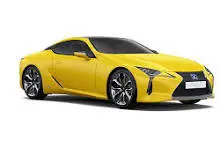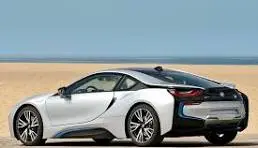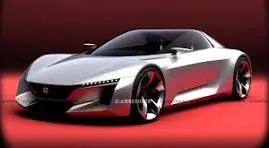Introduction:
Sport care is a broad term that includes many techniques meant to maximize athletic performance, avoid injuries, and guarantee quick recovery. Sport care is essential for preserving your physical health and performing at your best on the field, court, or track, regardless of your level of experience or passion for exercise. It covers nutrition, hydration, mental health, and the usage of specific equipment in addition to physical preparation and recovery methods. Athletes can improve their general health, prolong their careers, and enjoy their sport with a lower chance of injury by incorporating complete sport care practices.
LEXUS SPORT CARE SPORTS CAR

A Synopsis of the Past
When Lexus was first debuted in 1989, it was focused on building opulent, high-end cars. Although it was once recognized for its sedans and SUVs, Lexus entered the sports car industry to take on other high-end manufacturers like Mercedes-Benz and BMW. Because of the company’s dedication to quality and innovation, sport care vehicles from this marque quickly became popular with fans looking for both luxury and performance.
Famous Models
Lexus LFA
The LFA is among the most recognizable Lexus sports car vehicles. The 2010 LFA supercar served as a showcase for Lexus’s high-performance engineering prowess. The LFA can go from 0 to 60 miles per hour in just 3.6 seconds because to its 4.8-liter V10 engine, which produces 552 horsepower. Its precise handling, lightweight polymer body reinforced with carbon fiber, and superior aerodynamics.
Lexus RC F
A high-performance coupe that personifies the brand’s quest for excellence is the Lexus RC F. It was introduced in 2014 and has a 5.0-liter V8 engine that produces 472 horsepower, enabling it to reach 60 mph in 4.2 seconds. With an emphasis on providing a thrilling yet elegant driving experience, the RC F is built for enthusiasts. It stands out in the premium sports vehicle class thanks to its aggressive appearance, cutting-edge suspension system, and luxurious interior.
The Lexus LC 500
the 2017 release of the Lexus LC 500 marked the culmination of Lexus engineering and design. With a 5.0-liter V8 engine that generates 471 horsepower, this grand toured can reach 60 miles per hour in 4.4 seconds.
Technological Progress
Technology advancements made by Lexus sports cars are well known for improving performance and the driving experience. Important developments consist of:
Advanced Aerodynamics: To create vehicles with remarkable aerodynamics that lower drag and increase stability at high speeds, Lexus engineers use computational fluid dynamics and wind tunnel testing.
Lightweight Materials: Vehicle weight can be decreased by using lightweight materials like aluminum and carbon fiber, which improves handling, acceleration, and fuel economy.
Performance-Tuned Suspension: To deliver the best possible handling and comfort, Lexus sports vehicles are equipped with cutting-edge suspension technologies, such as adaptive variable suspension.
High-Performance Engines: Lexus engines are built to produce thrilling power and torque while preserving smoothness and dependability. They range from normally aspirated V8s to twin-turbocharged V6s.
BMW SPORTS CAR

A Wealthy Lineage
BMW sports car was established in 1916 and has a rich history of manufacturing motors and automobiles that prioritize innovation and performance. The BMW 328, a vehicle that established the benchmark for lightweight design and driving characteristics, marked the beginning of the brand’s serious foray into the sports car market in the 1930s. BMW has continuously improved its array of sport care throughout the years by incorporating cutting-edge technologies and stretching the limits of automotive engineering.
Famous Models
BMW M1
the brand’s first real supercar, the 1978 BMW M1 was a showcase for the company’s engineering skill. The M1 had a mid-engine configuration and a 3.5-liter inline-six engine that produced 273 horsepower. Its highest speed was 162 mph.
BMW M3
when it was introduced in 1986, the BMW M3 swiftly rose to fame in the sport care industry. The M3 had an aggressive look, accurate handling, and a high-revving four-cylinder engine. It was originally based on the E30 3 Series. The M3 has developed throughout the years, and its most recent version features a turbocharged inline-six engine that produces over 500 horsepower. The M3 is still praised for striking a mix between performance suitable for the racetrack and everyday use.
Z4 BMW
The BMW Z4, which debuted in 2002, added a roadster’s grace and dynamic driving to the brand’s portfolio of sports vehicles. The Z4 provides an interesting driving experience with its traditional large hood and short rear deck proportions. The most recent model has an inline-six turbocharged engine that produces 382 horsepower,
BMW i8
the 2014 release of the BMW i8 symbolizes the company’s dedication to sustainability and innovation. 369 horsepower is produced by this plug-in hybrid sports car’s three-cylinder turbocharged engine and electric motor working together. The i8 redefines what a modern-day sports car can be with its futuristic look, lightweight carbon fiber construction, and eco-friendly technologies.
Innovations in Technology
BMW sports cars are well known for utilizing cutting edge technologies to improve driving dynamics and performance. Important inventions consist of:
M Performance: With improved suspension systems, aerodynamic upgrades, and tuned engines, the M division creates some of BMW’s most potent and nimble cars.
Lightweight Construction: By reducing total weight and utilizing lightweight materials like carbon fiber and aluminum, lightweight construction improves acceleration.
HONDA SPORTS CAR

An Innovative Tradition
The 1960s saw Honda embark on its adventure into the sport care vehicle market, during which time the company relentlessly pursued engineering perfection. Honda developed its expertise in lightweight design and high-revving engines for its cars from its experience in producing motorcycles. This kind of thinking created the foundation for a line of sports vehicles that were renowned for their accuracy, potency, and enjoyment to drive.
Famous Models
S2000 Honda
Introduced in 1999 to mark the company’s 50th anniversary, the S2000 is among the most recognized sport care vehicles made by Honda. The 2.0-liter inline-four engine of the S2000 is well-known for its powerful 240 horsepower and 9,000 rpm peak rev limit. Its precision handling, rear-wheel-drive setup,
Honda NSX
The apex of Honda’s sports vehicle engineering is the Honda NSX, or Acura NSX in North America. The NSX was a ground-breaking supercar that blended extraordinary performance with practicality when it was introduced in 1990. It was a strong rival to European supercars thanks to its lightweight aluminum construction, mid-engine layout, and 3.0-liter V6 engine with VTEC technology. Introducing in 2016, the second generation NSX continues this legacy with a hybrid powertrain that generates 573 horsepower from a twin-turbo V6 engine and three electric motors. With the help of an intricate all-wheel-drive system, this cutting-edge drivetrain offers exceptional handling and performance.
Honda Civic Type-R
despite not being a conventional sports vehicle, the Honda Civic Type R is noteworthy for its performance capabilities.
Technological Progress
Honda is well known for its technology advancements in sports cars, which improve performance and the driving experience. Important developments consist of:
VTEC Technology: Honda’s VTEC system, which stands for Variable Valve Timing and Lift Electronic Control, maximizes engine performance throughout a range of RPMs to deliver high-revving power and efficiency.
Lightweight Construction: Honda uses cutting-edge materials like carbon fiber and aluminum to cut weight, which enhances handling, acceleration, and fuel economy.
Hybrid Powertrains: Combining electric motors and a potent gasoline engine for increased performance and efficiency, Honda’s second-generation NSX is a prime example of their technological prowess in hybrid systems.
Advanced Aerodynamics: The aerodynamics of Honda’s sports cars are expertly crafted to lower drag and boost down force, which improves handling and stability at high speeds.
Honda Sports Cars’ Future
Honda keeps innovating by investigating novel technologies and expanding the frontiers of automobile engineering. Honda is demonstrating its commitment to sustainability by developing electric and hybrid powertrains, which will probably be integral to the company’s sports vehicle lineup in the future. Future models are anticipated to feature even more sophisticated technology that combines environmental awareness with performance.
In summary
Honda sports vehicles are a perfect example of the company’s commitment to enthusiasm for driving and engineering brilliance. With models ranging from the exhilarating Civic Type R to the famous S2000 and ground-breaking NSX, Honda’s sports car collection has something to offer every enthusiast. Honda continues to lead the way in the automotive industry, always reinventing what it means to drive a sports vehicle.

